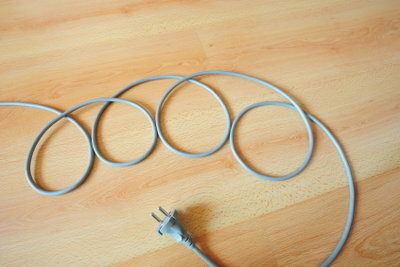Choosing floor coverings for the kitchen
Floor coverings for kitchens have special requirements that you need to think about before laying them out in the kitchen. Note that floor coverings in kitchens will be exposed to moisture, chemical influences and mechanical loads.

What you need:
- Knowledge of flooring
Advantages and disadvantages of different floor coverings in kitchens
- Glazed Tiles: These floor coverings have a smooth and easy-to-clean surface. Unfortunately, glazed tiles tend to be slippery when wet. Correctly laid, tiled gusts are waterproof and the tiles won't break if a pot falls on them. Make sure that you only use floor tiles that do not become slippery when wet, and that you lay them correctly over the entire surface without voids under the tiles.
- Unglazed tiles look beautiful and go perfectly with country kitchens. Unfortunately, the surface is porous and spilled oil leaves stains that can hardly be removed. Otherwise, these tiles are well suited as floor coverings for kitchens.
- Laminate: These floor coverings are available in many beautiful decors, some of which are ideal for kitchens, but laminate is sensitive to moisture. A dishwasher that leaks can completely ruin these floors, but water dripping on the floor while washing can also be a problem if you don't mop it up right away. Also, oil and grease can ruin the floor if you don't wipe it all off quickly. These floor coverings are not necessarily suitable for kitchens.
- Parquet: Sealed parquet is less sensitive than laminate, but a leaky dishwasher will also destroy a perfectly sealed parquet floor.
- Wooden floorboards: Wooden floorboards also swell easily when moisture gets on them. In addition, wooden floorboards have furrows and joints between the individual boards. Dirt that gets into these joints cannot be removed. In historical kitchens, wooden floorboards look very good, of course, but they are hygienically questionable. You should at least design the work area in front of the sink and stove with different floor coverings.
- Cork: Open cork is hardly suitable for the kitchen floor, while sealed cork is almost too insensitive as a PVC-Floor.
- Stone: Stone floors, provided they are smooth, polished stones, are good and robust kitchen floors. With these floor coverings, keep in mind that they are often quite sensitive to acids. Spilled vinegar or juice can leave permanent stains.
- PVC: Smooth PVC floors are usually always suitable as floor coverings for kitchens. The very soft surface prevents falling dishes from breaking into pieces and PVC can cope with almost anything that can happen in a kitchen. Oil, acid and water are all no problem for PVC. Only great heat, such as embers falling down from an open fire, can cause stains.
- Carpet: These floor coverings are being displaced by other floor coverings in almost all living areas because they are simply unhygienic, as damp cleaning is difficult. If you still want carpeting in the kitchen, then just think about the liquids you had to clean from the existing floor in the kitchen in the last six months. You will hardly be able to completely remove juice, coffee, tea, oil or dishwashing water from a carpet.
PVC and CV - a difference that matters
As soon as the terms PVC or CV are used when talking about flooring, hot ...
Which Flooring You too for yours kitchen you should decide according to your taste but also according to practical considerations. For floor coverings in kitchens, stability, cleaning options and stability are important.
How helpful do you find this article?



